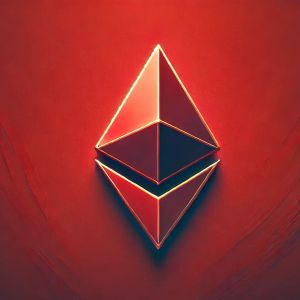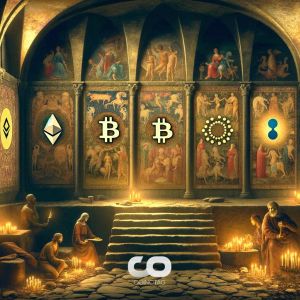XRP continues its strong rally but is now in overbought territory, though analysts still see room for further gains. And PlutoChain ($PLUTO) might be interesting to look at as a Layer-2 solution designed to fix Bitcoin’s scalability issues. With 2-second block times and EVM compatibility it could push Bitcoin beyond a store of value. Here’s what you need to know on both projects. Will XRP Break $3 or Face a Pullback? XRP has been on a strong upward trend. It surged 9.56% in the past 24 hours to $2.75 on February 14. It even hit an intraday high of $2.81 before pulling back slightly. Trading activity remains strong, with 24-hour volume reaching $9.61 billion and a market cap of $158.87 billion, which keeps XRP among the top cryptocurrencies. The Relative Strength Index (RSI) is at 71, signaling that XRP has entered overbought territory. This means buyers have been in control, but it also raises the possibility of a short-term correction. RippleMaestro believes XRP could end the year above $10 and cites optimism about its growth potential. CoinsKid expects XRP to hit at least $4 in its current wave 3, followed by a wave 4 correction before a final wave 5 rally to at least $8.31. PlutoChain ($PLUTO) Could Expand Bitcoin’s Overall Utility With its Hybrid Layer-2 Network Bitcoin may be the world’s first and most recognized cryptocurrency, but it struggles with slow transactions and high fees, which makes it impractical for everyday payments. When network congestion spikes, fees can skyrocket to $50 or more, which further limits its real-world usability. PlutoChain ($PLUTO) could step in as a hybrid Layer-2 solution designed with the potential to enhance Bitcoin’s speed and affordability. By implementing 2-second block times — a huge improvement compared to Bitcoin’s 10-minute blocks — PlutoChain could make transactions nearly instant and allow for smoother microtransactions and more efficient cross-border payments. One of PlutoChain’s biggest advantages is its potential to lower transaction costs, which have often made small Bitcoin payments impractical. By reducing fees, PlutoChain could make Bitcoin more accessible for daily use by both individuals and businesses. Beyond speed and cost, PlutoChain also brings Ethereum Virtual Machine (EVM) compatibility and could allow Bitcoin to connect with DeFi applications, NFT marketplaces, and AI-powered blockchain tools. This could greatly expand Bitcoin’s utility beyond just a store of value. What’s more, PlutoChain has undergone audits by SolidProof , QuillAudits , and Assure DeFi , along with regular code reviews and stress tests. Testing has already shown promising results, with PlutoChain processing over 43,200 transactions in a single day. Unlike Bitcoin’s miner-controlled network, PlutoChain takes a more decentralized approach by allowing users to propose and vote on upgrades. With its focus on faster transactions, lower fees, and greater functionality, PlutoChain has the potential to usher in Bitcoin’s next phase of real world adoption. The Bottom Line As XRP nears the key $3 resistance, investors should watch for signs of a pullback, especially with its RSI in overbought territory. Meanwhile, PlutoChain’s Layer-2 solution could gain attention because of its potential to speed up Bitcoin transactions while bridging it with DeFi and AI applications through a more decentralized model. —— This article does not offer financial advice. Cryptocurrencies can be unpredictable and carry risks. It is important to conduct thorough research before acquiring any crypto asset. Forward-looking statements carry risks and are not guaranteed to be updated. Disclosure: This is a sponsored press release. Please do your research before buying any cryptocurrency or investing in any projects. Read the full disclosure here .

















